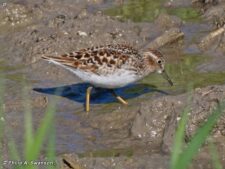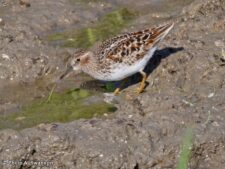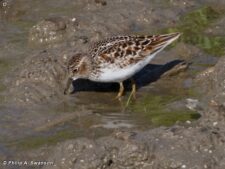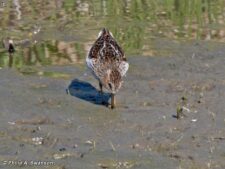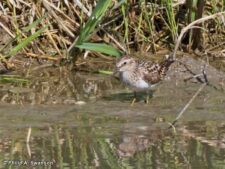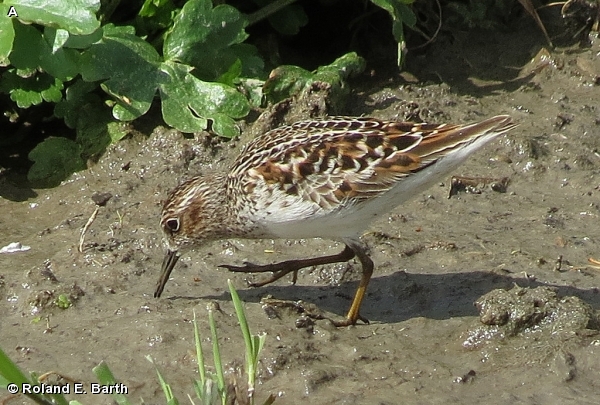
6 inches long. The Least Sandpiper is a small sandpiper with brown-scaled upperparts and a rust-brown crown. The breast and throat are dark-spotted The belly and undertail are white. The wings have thin, white stripes that are visible in flight. In flight you may see a black line on rump extending onto the tail. The bill is usually slightly downcurved. Most importantly the legs and feet are yellow-green, but be careful since the legs can become dark when covered with mud. Adults become plainer looking in the fall. Juveniles look like breeding birds but may be somewhat more brightly colored.
The Least Sandpiper is common in the Omaha area during migration but rare in Fontenelle Forest due to lack of habitat. However when conditions are right it may be seen on mud flats near the great Marsh.
The Least Sandpiper has swift and direct flight. It breeds from Alaska to Labrador and, in the east, south to Nova Scotia and, recently, Massachusetts. Winters are spent from the southern U.S. to central South America and the West Indies. The Least Sandpipers tend to forage at the upper edge of mudflats or along drier margins of inland ponds more frequently than other related small sandpipers. The call is a high plaintive “kreee”.
Disclaimer: The content of NatureSearch is provided by dedicated volunteer Naturalists of Fontenelle Forest who strive to provide the most accurate information available. Contributors of the images retain their copyrights. The point of contact for this page is: Phil Swanson.

